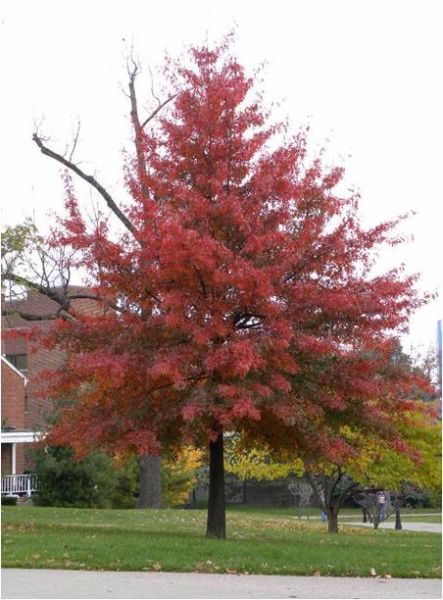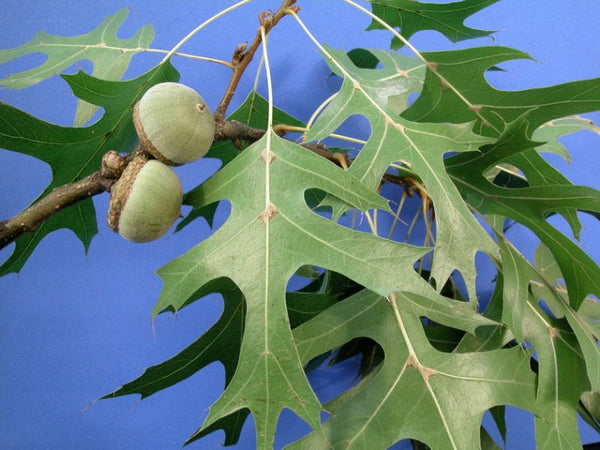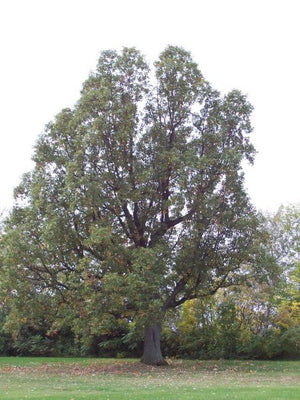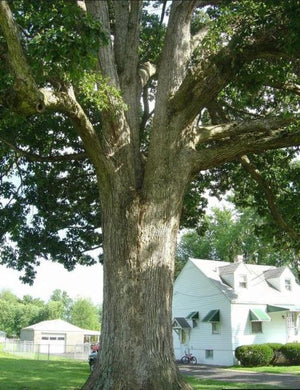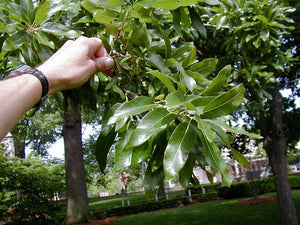Pin oak, Quercus Palustris
Shipping calculated at checkout
60 in stock
Need more? Contact us
This tree needs pollination
Compatible trees:
Swamp white Oak, Quercus Bicolor
Swamp white Oak, Quercus Bicolor
Chinquapin Oak, Quercus Muehlenbergii
Chinquapin Oak, Quercus Muehlenbergii
Shingle Oak, Quercus Imbricaria
Shingle Oak, Quercus Imbricaria
An oak that loves water!
Quercus palustris, the pin oak is an oak in the red oak section . Pin Oak is one of the most commonly used landscaping oak in its native range due to its ease of transplant, relatively fast growth, and pollution tolerance. Its distinctive shape is considered unique among hardwoods. It is a medium-sized deciduous tree growing to 18–22 metres (59–72 ft) tall, with a trunk up to 1 metre (3.3 ft) diameter. It has an 8–14-metre (26–46 ft) spread. A 10-year-old tree will be about 8 metres (26 ft) tall. Young trees have a straight, columnar trunk with smooth bark and a pyramidal canopy. By the time the tree is 40 years old, it develops more rough bark with a loose, spreading canopy. This canopy is considered one of the most distinctive features of the pin oak: the upper branches point upwards, the middle branches are perpendicular to trunk, and the lower branches drop downwards. A fast-growing pioneer or riparian species, pin oak is relatively short-lived, with a maximum lifespan of 120 years against many oaks which can live several centuries. It is naturally a wetland tree, and develops a shallow, fibrous root system, unlike many oaks, which have a strong, deep taproot when young. It is confined to acidic soils, and does not tolerate limestone or sandy Florida soil, and grows at low altitudes from sea level. A characteristic shared by a few other oak species, and also some beeches and hornbeams, is the retention of leaves through the winter on juvenile trees, a natural phenomenon referred to as marcescence. Young trees under 6 metres (20 ft) will often be covered with leaves year-round, though the leaves die in the fall, remaining attached to the shoots until the new leaves appear in the spring. As with many other oak species, dead pin oak branches will stay on the tree for many years. In its native range, Pin Oak is the most commonly used landscaping oak along with Northern Red Oak due to its ease of transplant, relatively fast growth, and pollution tolerance. The wood is generally marketed as red oak, but is of significantly inferior quality, being somewhat weaker, often with many small knots. The wood is hard and heavy and is used in general construction and for firewood. Suitable for zone 4a-4b.
Are you interested? please use the information in its technical sheet.
Hardiness Zones
Specific port
Growth speed
Flowering period
Number of years for production
10 years

